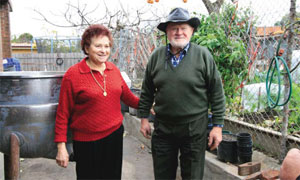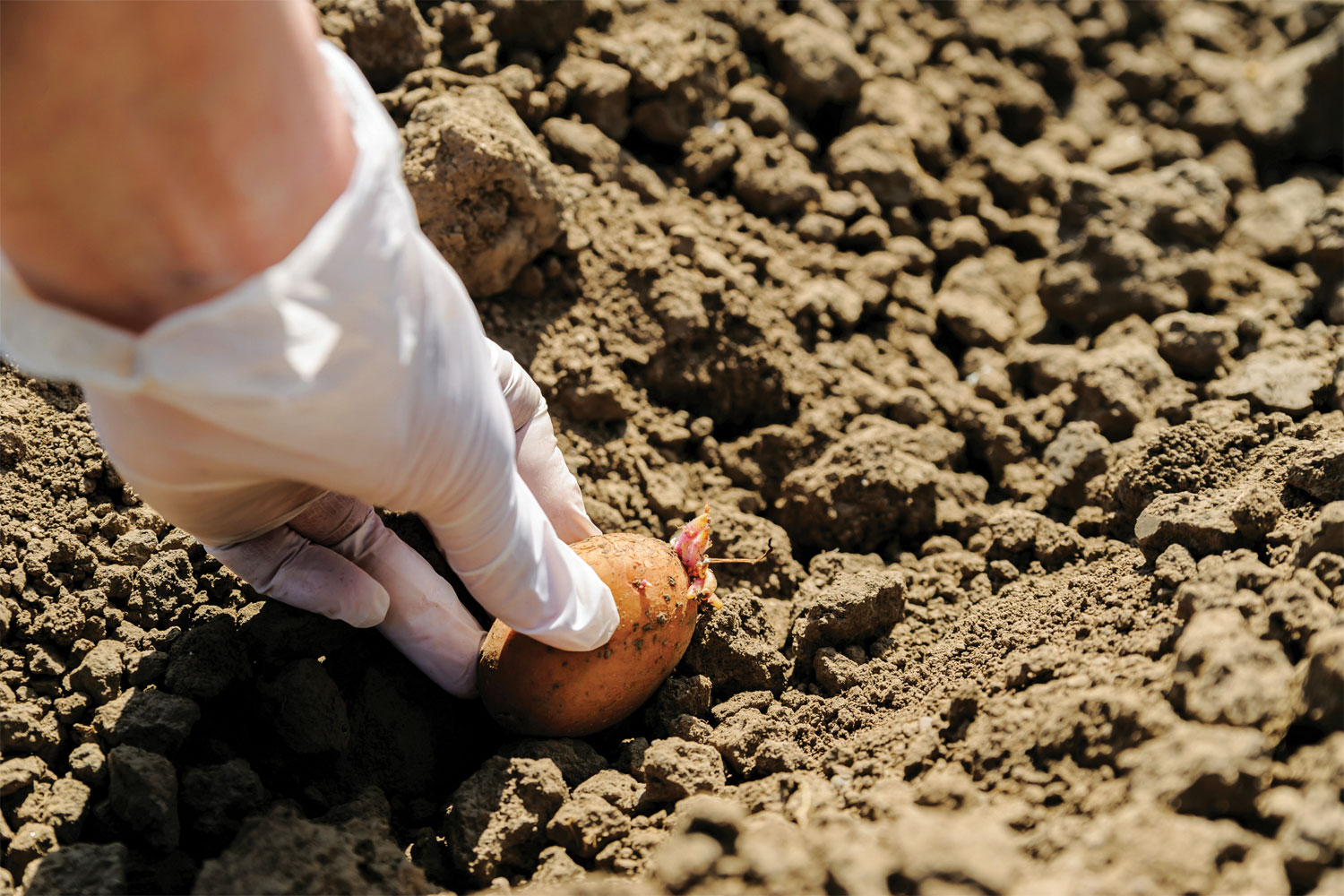In Bruno Bergamin’s bustling garden.

Every year when at the Darebin Homemade Wine & Beer Festival, you can’t miss have a glass or two of Bruno Bergamin’s homemade wine or, as he’d call it, “the good stuff”. Of the 80-odd entries, Bruno’s wine has always been judged in the top three. Bruno’s talents go beyond wine, though. Married to Alexandra for more than 50 years and with four children and nine grandchildren, he has spent the best part of his life food gardening in his Reservoir (Melbourne) backyard. It has always been his mission, along with keeping Alexandra busy in the kitchen. “You must keep her busy cooking all the time, otherwise she gives me headache. That’s why I grow so many vegetables,” he jokes.
As with many Italians of his generation, winemaking and concreting have figured strongly in Bruno’s life. In fact, it looks like he had one too many wines when he decided to concrete the property. The hard stuff is literally everywhere; everywhere except the vegie garden, of course. When it came to kicking a ball around, it was always a bit of a tight situation for the children, having only narrow pathways to play in. They were forbidden to go in the garden to play but were always welcome to pull out weeds and enjoy a fresh vegie or two while they were at it.
“After I finish a concrete job, I always have concrete mesh and steel left over, so I collect them over time and use them to pour concrete around my house. It’s better for concrete, not for grass. Grass takes too much time to look after and for nothing. I don’t have sheep, so I put concrete and no worry for the kids. They learn to play more carefully.”
Decades have gone by and Bruno still gardens the same way he always has, making his own fertiliser and training his plants. Chickens still roam freely in the garden, cleaning up all the nasty pests that would otherwise destroy the plants. And after a bumper season, he collects the twine he used to tie his plants along with the CDs he hung to scare birds and stores them by tying them onto the chainwire fence surrounding the vegie garden until the next planting season.
There are two top tips to learn from Bruno. The first is his method to propagating a fig tree by cutting. It’s simple but very effective and guaranteed to work every time. Bruno had more than 30 orders he prepared last year still planted in the ground, waiting to be picked up – twigs no more than one year old laden with fruit. What’s going on? Often, people complain that their fig trees that are a few years old don’t produce any fruit, and here we have Bruno’s baby twigs producing figs?
“It’s easy. I no use chemicals and I have been doing this for many years and I guarantee it always works.”
On the whole, though, Bruno’s vegie-growing methods are similar to those of many other Italian gardeners of his generation, with one difference, and this is my other tip from him: Bruno never uses manure to fertilise his garden. Instead, he digs the weeds that grow naturally in and around the vegies and places them in a large drum filled with water. After a couple of weeks, he scoops out the water to feed the plants and when the liquid is all used, he throws the remaining solids into the furrow between the vegies.
Here’s another good tip. If you’ve planted a fruit tree and you’re not sure how to grow it, consider training it into a weeping form like Bruno has with his persimmon. As you probably know, persimmon trees normally grow upright, but Bruno made his weep by weighing the branches down with half bricks tied to the end of each. “I don’t like my trees to grow too big, so I hang bricks off the branches. I leave the bricks on for a year or two to train the tree and now the tree weeps by itself. Look. It makes hundreds of persimmons every year.”
Gardening Bruno’s way requires a level of endurance and is especially hard on the nostrils. Making compost and weed juice, along with keeping chickens, can create pungent odours that waft through the air with sudden wind changes. But it’s a natural smell that many organic gardeners become quite accustomed to and, after all, it’s a small price to pay to have fresh, sweet produce with flavours that burst in your mouth.
One standout plant in Bruno’s garden was a tomato that was self-sown from last spring. It had germinated in the compost bin, producing hundreds of cherry tomatoes. Its dogged survival through cold winter nights only goes to show that self-sown plants are always much hardier than those we purposely sow.
Whichever way you look at it, everything that comes out of the ground will eventually, one way or another, make its way back in. And Bruno has that down pat.



